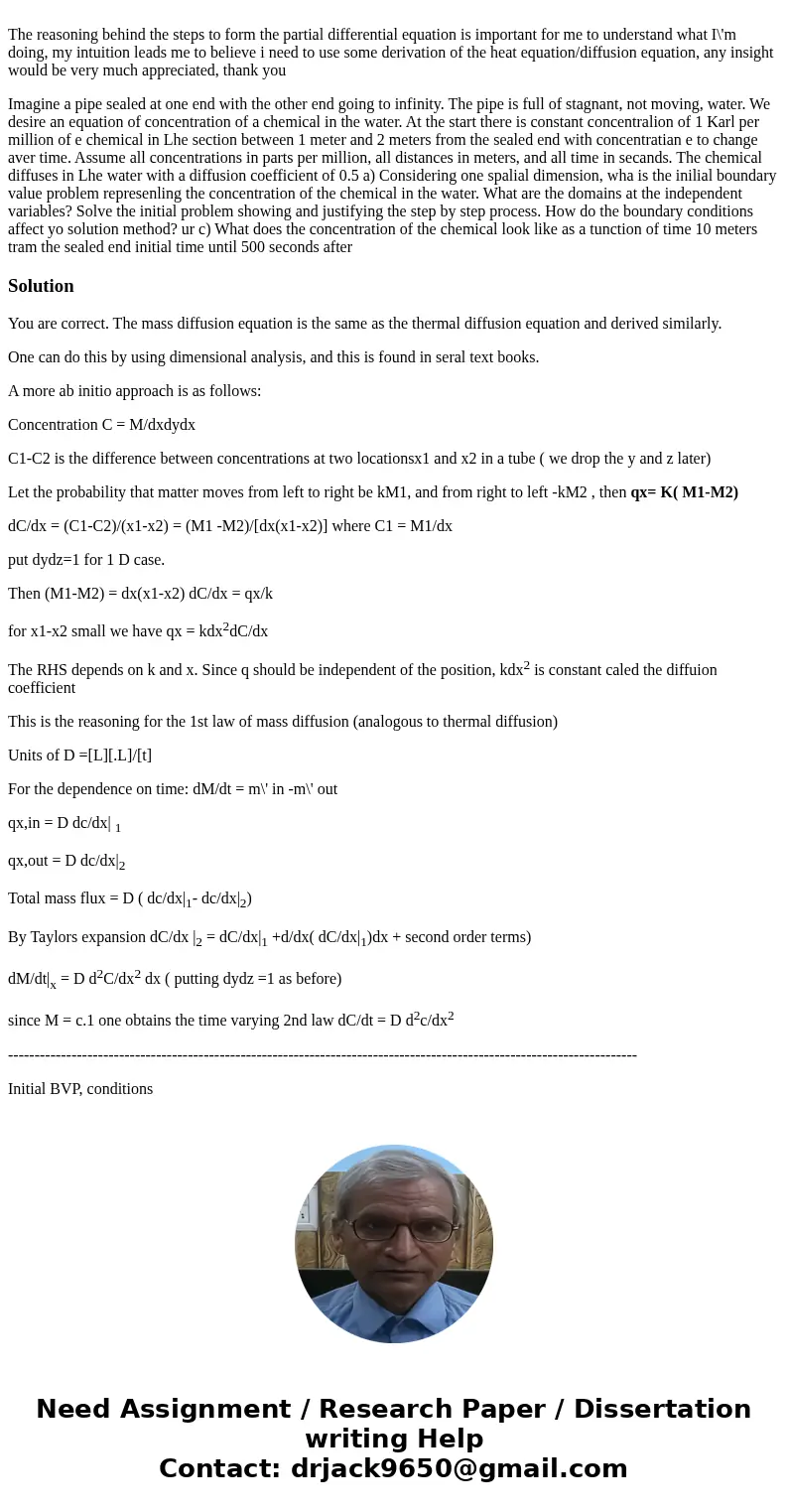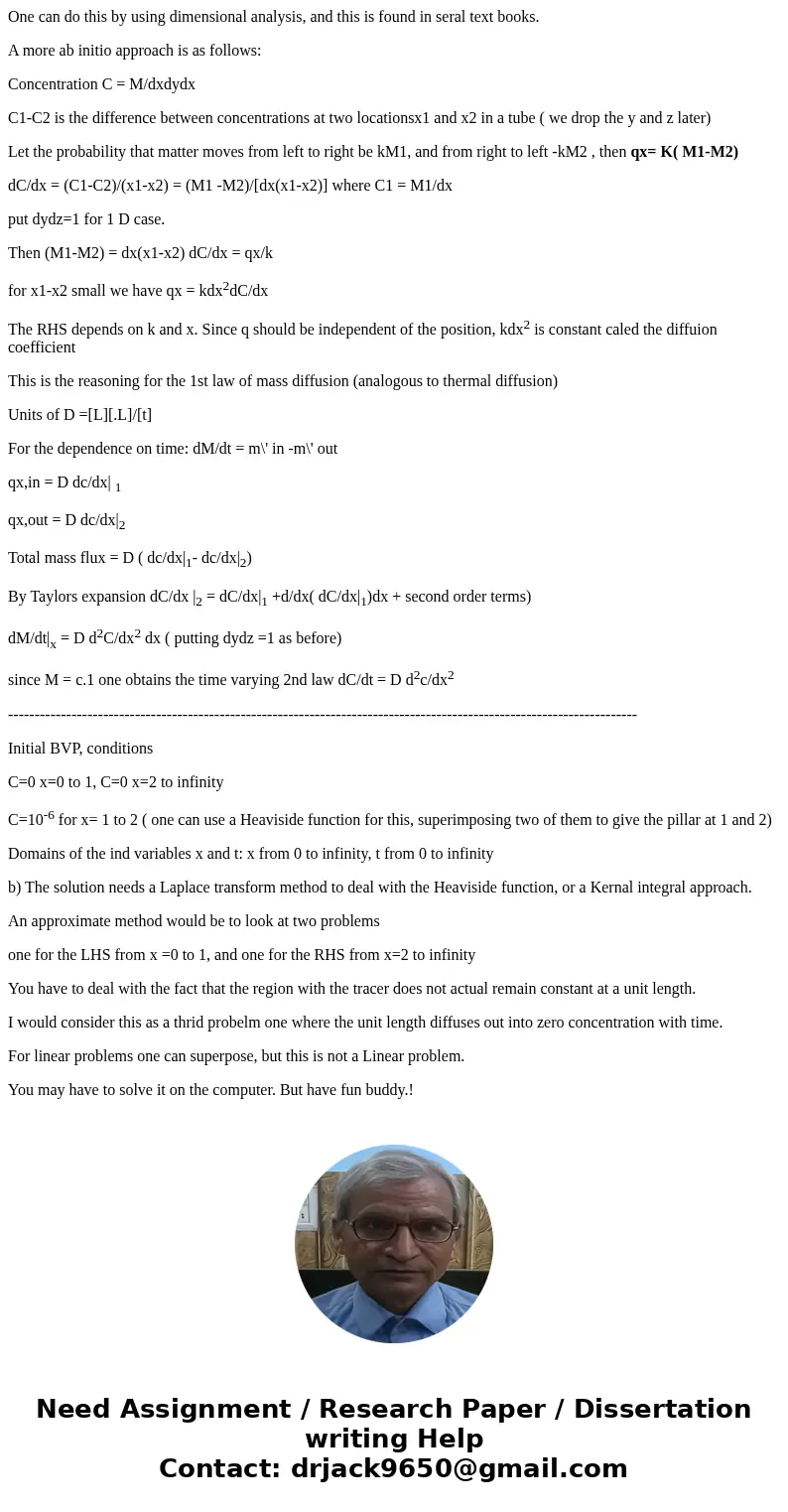The reasoning behind the steps to form the partial different
The reasoning behind the steps to form the partial differential equation is important for me to understand what I\'m doing, my intuition leads me to believe i need to use some derivation of the heat equation/diffusion equation, any insight would be very much appreciated, thank you
Solution
You are correct. The mass diffusion equation is the same as the thermal diffusion equation and derived similarly.
One can do this by using dimensional analysis, and this is found in seral text books.
A more ab initio approach is as follows:
Concentration C = M/dxdydx
C1-C2 is the difference between concentrations at two locationsx1 and x2 in a tube ( we drop the y and z later)
Let the probability that matter moves from left to right be kM1, and from right to left -kM2 , then qx= K( M1-M2)
dC/dx = (C1-C2)/(x1-x2) = (M1 -M2)/[dx(x1-x2)] where C1 = M1/dx
put dydz=1 for 1 D case.
Then (M1-M2) = dx(x1-x2) dC/dx = qx/k
for x1-x2 small we have qx = kdx2dC/dx
The RHS depends on k and x. Since q should be independent of the position, kdx2 is constant caled the diffuion coefficient
This is the reasoning for the 1st law of mass diffusion (analogous to thermal diffusion)
Units of D =[L][.L]/[t]
For the dependence on time: dM/dt = m\' in -m\' out
qx,in = D dc/dx| 1
qx,out = D dc/dx|2
Total mass flux = D ( dc/dx|1- dc/dx|2)
By Taylors expansion dC/dx |2 = dC/dx|1 +d/dx( dC/dx|1)dx + second order terms)
dM/dt|x = D d2C/dx2 dx ( putting dydz =1 as before)
since M = c.1 one obtains the time varying 2nd law dC/dt = D d2c/dx2
-----------------------------------------------------------------------------------------------------------------------
Initial BVP, conditions
C=0 x=0 to 1, C=0 x=2 to infinity
C=10-6 for x= 1 to 2 ( one can use a Heaviside function for this, superimposing two of them to give the pillar at 1 and 2)
Domains of the ind variables x and t: x from 0 to infinity, t from 0 to infinity
b) The solution needs a Laplace transform method to deal with the Heaviside function, or a Kernal integral approach.
An approximate method would be to look at two problems
one for the LHS from x =0 to 1, and one for the RHS from x=2 to infinity
You have to deal with the fact that the region with the tracer does not actual remain constant at a unit length.
I would consider this as a thrid probelm one where the unit length diffuses out into zero concentration with time.
For linear problems one can superpose, but this is not a Linear problem.
You may have to solve it on the computer. But have fun buddy.!


 Homework Sourse
Homework Sourse